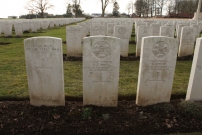| First Name: | Robert Thomas | Last Name: | INNES | |
|---|---|---|---|---|
| Date of Death: | 01/09/1916 | Lived/Born In: | Vauxhall | |
| Rank: | Private | Unit: | Cornwall Light Infantry7 | |
| Memorial Site: | ||||
Current Information:Born-Wandsworth Delville Wood Cemetery, Longueval, Somme
The Battle of the Somme (July-November, 1916) By the beginning of August the Battle of the Somme had been raging for a full month. Thousands of men had already been killed or wounded or were simply missing, never to be seen again and just a few square miles of the French countryside, all in the southern part of the battlefield, had been captured from the enemy. Mistakes had been made by the various commanders and would be continued to be made but there was no turning back as the British, Australians, South Africans, New Zealanders and Canadians carried on battering away at the German defences in the hope of a breakthrough, So it continued all the way through to November with nearly every battalion and division then in France being drawn into it at some stage. In the end the German trenches had been pushed back a few more miles along most of the line but the cost in lives had been staggering. By the end of the fighting in November, 1916, British Army casualties numbered over 400,000, killed, wounded and missing. 20th Division moved down to the Somme in the middle of July, 1916 and took up position in the Hebuterne sector of the battlefield but it was not until a month later that they were sent to the main battle front further south. On 22nd August they moved into the front line around the village of Guillemont. Here the battle had been raging for a number of weeks and the fighting had been hard and vicious. The following is a description of the area from the History of The Rifle Brigade 1914-1918, by Reginald Berkeley. The place was “..a horror that can hardly be imagined. Not merely was the front line impossible to be held: it could only be approached by men of the most iron fortitude. The position was dangerously exposed to fire from the village; but that was nothing. What horrified the senses and shocked the imagination was not what might come from outside the trenches, but what was in them. From end to end they were choked with British dead, on their backs, on their faces, hideously doubled up, distorted with pain, blackened and bloated by the sun, the prey of myriad upon myriad of carrion flies, odiously green with corruption…like a descent to the anterooms of Hell”. It was in this scene of carnage that 7th Cornwall Light Infantry of 61 Brigade found themselves on 29th August, when they moved into trenches half way between Trones Wood and Guillemont. To add to the horrors of the place it was raining hard, the mud lay thick on the ground and the German shelling was relentless. But they stuck it out for three days and nights during which time their casualty list grew longer and longer. One of those on it was Robert Innes who was killed on 1st September. |
||||
| « Back to Search Results | ||||
| If you think any of the information shown here is incorrect, Click Here to submit your amends and comments | ||||




